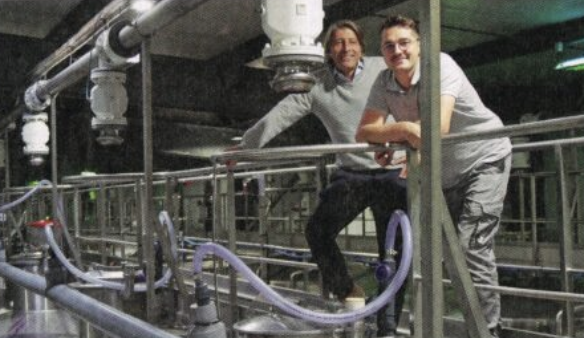Press article
CO2 storage and reuse become a reality
Published by Réussir Vigne, on 11/2023

Everything is automatic and only 99.5% pure gas is collected.
At the outlet of the PVC collection pipe, installed on a platform measuring just a few square meters outside the cellar, a processing unit the size of a refrigerator analyzes the quality of the gas, dries it and filters it. The PLC is set to collect the gas only when it is 99.5 % pure. The CO2 then passes through a 200-bar compressor, which compresses it and fills a rack of 12 50-liter bottles. Everything is automated," explains Quentin Renouil, Process Engineer at CO2 Winery. The rack is placed on a scale, and when the maximum storage capacity of 400 kg is reached, the system stops." Above the interconnected cylinders is a pressure reducer, from which a 15-bar supply network is fed back to the cellar. This gas is thus available for operations such as inerting, with the possibility of creating dry ice. In fact, dry ice forms naturally when the gas changes from a liquid to a gaseous state. However," explains Quentin Renouil, "this requires a network capable of withstanding 200 bars. This is the case for one of our two other customers.
Save time and water with the CO2 Water process
Frédéric Beyneix has also experimented with the use of this gas to acidify tank rinsing water, after cleaning with soda. The process was designed by CO2 Winery and named CO2 Water. The acidification system produced water with a pH of 5.6," says the site manager. The water coming out of the tank quickly returned to pH 7, which saved us time and water. This is much more difficult when we rinse with neutral water. The system is all the more effective for its real-time monitoring of the pH of the water leaving the tank. A connected sensor sends the information via Bluetooth to the operator's smartphone, who can stop as soon as the tank is buffered, and no longer fumbles around with test strips.
Frédéric Beyneix is delighted with this first experiment in fermentative CO2 capture. He also sees an undeniable safety aspect, since no carbon dioxide leaves the winery and ends up in the cellar. The fans generally work well, but there are always some left over," he says. The working atmosphere changes completely with this installation. There are no more fermenting odors. The manager points out that the system has not interfered in any way with the winemaking process.


